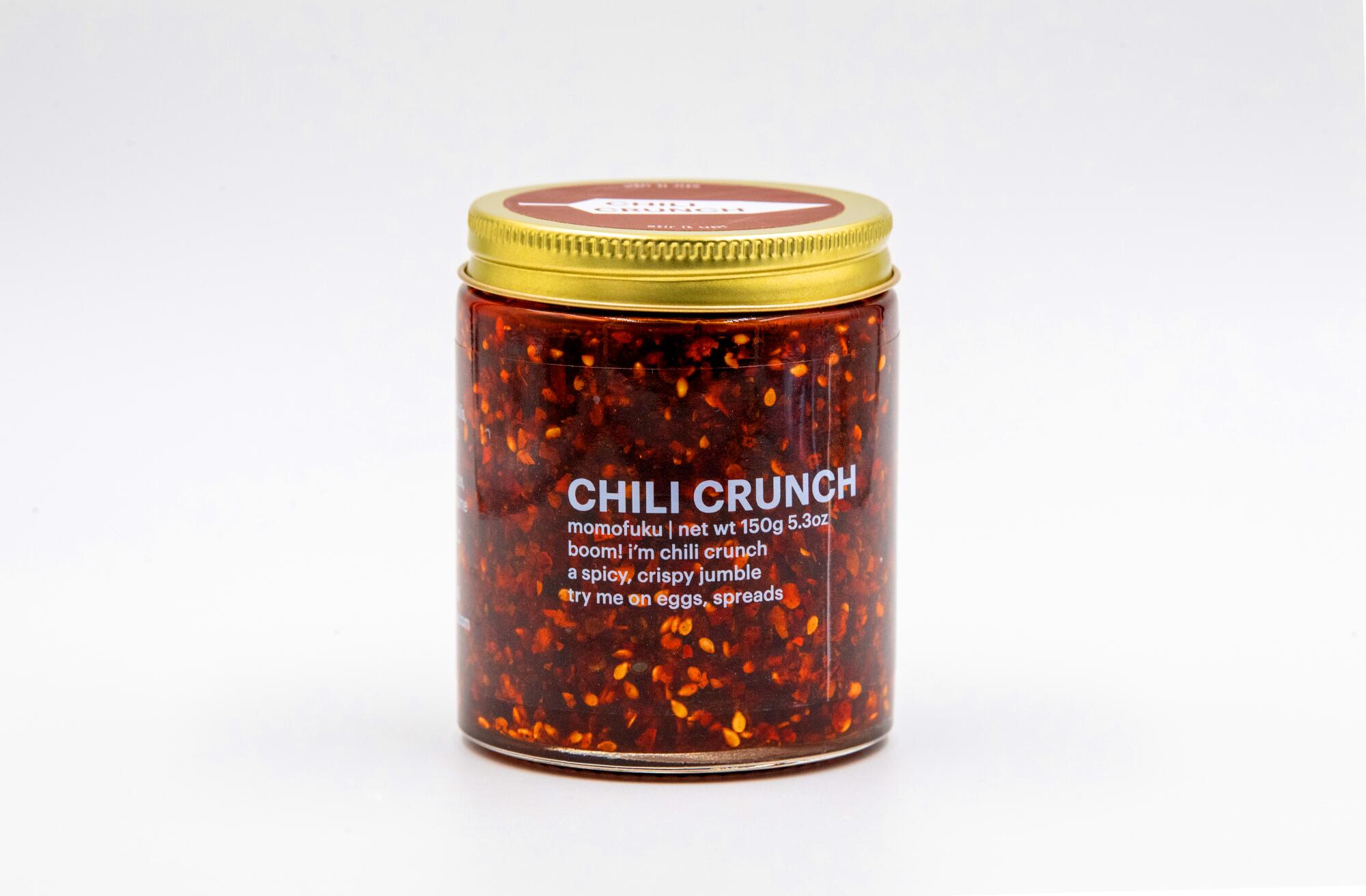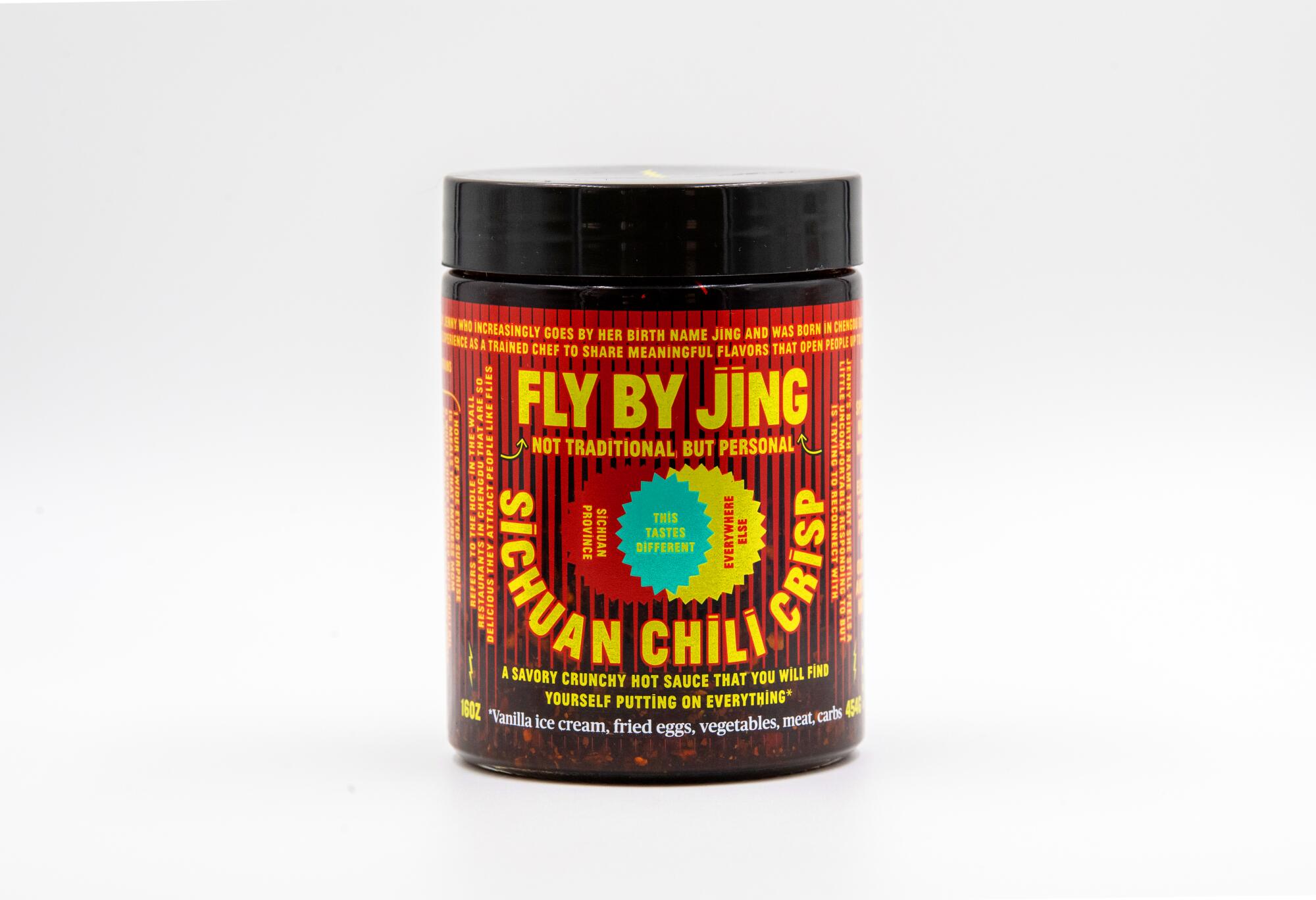In the culinary world, few things ignite passion and debate quite like a good condiment. From the ubiquitous ketchup to the exotic harissa, condiments have the power to elevate a dish from ordinary to extraordinary. One such condiment that has recently found itself in the midst of a trademark war is the beloved chili crunch, or as it’s also known, chili crisp.
The chili crunch craze has been steadily gaining momentum in recent years, with food enthusiasts around the globe singing praises of its fiery flavor and addictive crunch. At the heart of this craze lies a trademark dispute between two culinary giants: Momofuku and Fly By Jing.

A jar of Momofuku chili crunch. (Image from: Los Angeles Times)
It all started when Momofuku, the renowned restaurant group founded by chef David Chang, filed a trademark application for “chili crunch” in 2022. Their intention was to protect the name of their popular chili crunch condiment, which has garnered a cult-like following among food lovers.
Enter Fly By Jing, a brand known for its Sichuan-inspired sauces and condiments, including their own version of chili crunch, aptly named “Sichuan Chili Crisp.” When Momofuku’s trademark application came to light, Fly By Jing took action, filing a letter of protest against the trademark, arguing that “chili crunch” is a generic term used to describe a type of condiment rather than a specific brand.

A jar of Fly by Jing Sichuan Chili Crisp by Jing Gao. (Image from: Los Angeles Times)
The dispute has sparked a heated debate within the food community, with many questioning the validity of registering a trademark for a term as generic as “chili crunch.” Some argue that registering a trademark for such a common term could stifle competition and innovation in the culinary world, while others believe that it’s essential for businesses to protect their intellectual property.
Amidst the legal wrangling, one thing remains clear: the love for chili crunch knows no bounds. Whether it’s drizzled over noodles, spooned onto rice, or used as a dipping sauce for dumplings, chili crunch has secured its place in the pantheon of beloved condiments.
As the trademark battle plays out, one can’t help but wonder what the future holds for chili crunch and its various iterations. Will culinary creativity be hindered by trademark restrictions, or will it continue to flourish despite the legal hurdles? Only time will tell. In the meantime, one thing is for certain: chili crunch enthusiasts will continue to savor every spicy, crunchy bite, regardless of what name it goes by.
